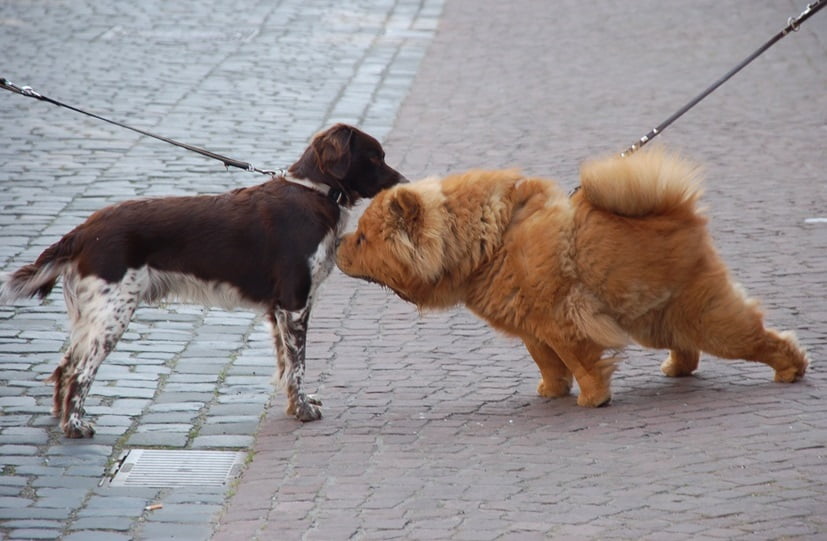Everyone knows the custom of handshaking; it has been around for centuries. But why do people shake hands when they meet? A new Israeli study suggests that one of the reasons for this ancient tradition may be to check out each other’s odors – by sniffing the hand that shook. Even if we are not consciously aware of this, handshaking provides us with a socially acceptable way of communicating via the sense of smell. It turns out that our canine friends are not the only ones who sniff each other!
SEE ALSO: Israeli Doc Teaches Dogs To Sniff Out Cancer
According to a new Weizmann Institute study led by Prof. Noam Sobel, not only do people often sniff their own hands subconsciously, but they do so for a much longer time after shaking someone else’s hand. The study, which was recently published in the scientific journal eLife, found that the number of seconds the subjects spent sniffing their right hand more than doubled after an experimenter greeted them with a handshake.
“Our findings suggest that people are not just passively exposed to socially significant chemical signals, but actively seek them out,” Idan Frumin of the research team said in a statement. “Rodents, dogs and other mammals commonly sniff one another in social interactions, and it seems that in the course of evolution, humans have retained this practice – only on a subliminal level.”
Odors serve as meaningful chemical signals
Handshaking subjects’ hands, the researchers found that a handshake alone was sufficient for the transfer of several odors known to serve as meaningful chemical signals (which contain social and emotional information) in mammals. “It’s well known that germs can be passed on through skin contact in handshakes, but we’ve shown that potential chemical messages, known as chemosignals, can be passed on in the same manner,” Frumin says.
SEE ALSO: Sense Of Smell Is Physiological, Not Psychological, Study Shows
In order to explore the potential role of handshakes in communicating odors, the scientists used cameras to document some 270 volunteers before and after they were greeted by an experimenter, who either shook their hand or didn’t. The researchers found that after shaking hands with an experimenter of the same gender, subjects more than doubled the time they later spent sniffing their own right hand (the shaking one). In contrast, after shaking hands with an experimenter of the opposite gender, subjects increased the sniffing of their own left hand (the non-shaking one).
Sign up for our free weekly newsletter
SubscribeAccording to the study, “this reflects an ongoing comparative process whereby sniffing of the left hand subserves self-recognition and sniffing of the right hand subserves the investigation of others.” This notion of a comparative process, however, remains a speculation deserving further address. “The sense of smell plays a particularly important role in interactions within gender, not only across gender as commonly assumed,” Frumin says.
The nose knows
In order to verify that the hand-sniffing indeed served the purpose of checking out odors and was not merely a stress-related response to a strange situation, the scientists performed a series of further tests. First, they measured nasal airflow during the task and found that subjects were truly sniffing their hands and not just lifting them to their nose. It turned out that the amount of air inhaled by the volunteers through the nose doubled when they brought their hands to their face.
Next, the scientists found they could manipulate the hand sniffing by artificially introducing different smells into the experimental setting. For example, when experimenters were tainted with a commercial unisex perfume, the hand sniffing increased. In contrast, when the experimenters were tainted with odors derived from sex hormones, the sniffing decreased. These final tests confirmed the olfactory nature of the hand sniffing behavior.
“Handshakes vary in strength, duration and posture, so they convey social information of various sorts,” Prof. Sobel said in a statement. “But our findings suggest that at its evolutionary origins, handshaking might have also served to convey odor signals, and such signaling may still be a meaningful, albeit subliminal, component of this custom.”
Photos and video: The Weizmann Institute, Roland Geider, Hernán Piñera
Related posts

Israeli Medical Technologies That Could Change The World

Harnessing Our Own Bodies For Side Effect-Free Weight Loss

Missing Protein Could Unlock Treatment For Aggressive Lung Cancer






Facebook comments